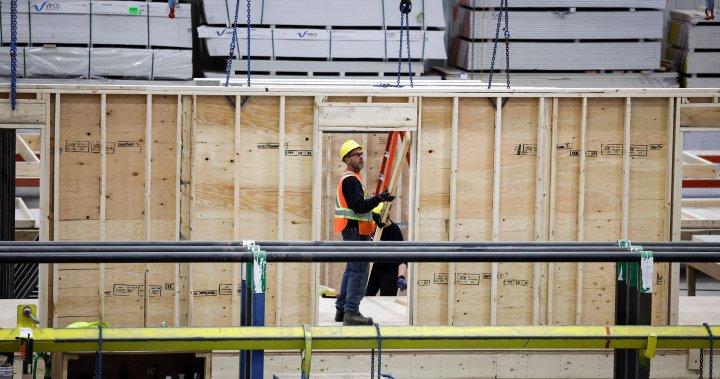Canada’s national housing agency has identified a growing construction worker shortage as a key challenge in boosting housing supply. The Canada Mortgage and Housing Corp. reported that longer construction times are being caused by larger project sizes, increasing costs, and workers retiring faster than they are being replaced. The pandemic exacerbated this issue, as some construction workers changed careers or retired prematurely instead of returning to the industry. As Jordan Thomson, senior manager of infrastructure advisory at KPMG in Canada, noted, the industry is facing the challenge of replacing retiring workers while also growing to meet the rising demand for housing.
The labour shortage in the construction industry is expected to impact the sector significantly in the coming years. Canadian Home Builders’ Association CEO Kevin Lee estimated that 22 per cent of residential construction workers are set to retire over the next decade, further exacerbating the worker shortage. Despite the relative slowdown in demand due to high borrowing costs in recent years, a rebound could lead to increased strain on the construction sector. A report by RBC assistant chief economist Robert Hogue projected that Canada may need over 500,000 additional construction workers by 2030 to meet housing demands.
To address the construction labour shortage, various strategies have been proposed to expand the sector’s labour pool. Hogue emphasized the need to attract more people to the trades, prioritize construction skills among new immigrants, and set ambitious targets for skilled trade school enrolments. The federal government’s budget also recognized the need to encourage more people to pursue careers in the skilled trades and reduce barriers to foreign credential recognition for construction workers. Initiatives such as apprenticeship opportunities and a summer jobs program in sectors facing labour shortages, including housing construction, were included in the budget.
Mary Van Buren, president of the Canadian Construction Association, highlighted the importance of finding immediate solutions to the construction labour shortage, as the association currently has 52,000 active job openings. She emphasized the need to prioritize immigrants with skilled trade backgrounds to provide a quicker boost to the sector. Van Buren noted that other countries, such as the U.S., U.K., Germany, and France, are also dealing with similar challenges and rely on immigration to address their construction workforce needs. The implementation of factory-built homes could also help increase productivity in the construction sector over the medium-to-long term.
According to a survey by KPMG, the majority of business leaders in real estate and construction feel that their organizations still lack the skilled talent needed to grow, despite the influx of immigrants. To address this issue, new approaches such as prefabricated homes, modularization, and digital tools are being explored to improve productivity on construction sites. Thomson emphasized the urgency of adopting new construction methods to accelerate the delivery of housing and infrastructure projects, as waiting for the workforce to scale up may not be sufficient. By embracing innovative solutions and prioritizing the recruitment of skilled trades workers, Canada can work towards overcoming the construction labour shortage and meeting the growing demand for housing in the years to come.















